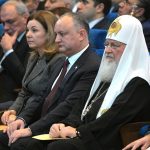SPECIAL REPORTS
Date: 14 March 2019 Author: Jakub Lachert
Post-Soviet Frozen Conflicts: A Challenge for European Security
Frozen conflicts occur in regions of the countries that are no longer controlled by the central authorities. Such zones remain under the jurisdiction of separatists who conduct a peace dialogue with state officials in a bid to empower their own governments. The lack of nonviolent solutions to the problem does not lead to broader armed operations while conflicts are doomed to persist unsolved.
This results in a weakened position of the central authorities, also inciting other states that back the separatists to interfere in their affairs, either directly or not. Frozen conflicts in the territories of the former Soviet republics pose a great challenge to establishing international ties in Eastern Europe and the South Caucasus. Owing to the lack of full sovereignty over their provinces, countries such as Georgia, Moldova and Ukraine cannot pursue an independent foreign policy. They are all within the control of so-called “proto-states” tasked with introducing Russian-imposed policies as the Kremlin secures their safety while implementing an economic assistance program. So far Moscow has taken steps to obstruct Euro-Atlantic aspirations of those states as neither the North Atlantic Alliance nor the European Union allows membership to countries that are unable to seize full authority over their territories. Particular attention should be drawn to the situation in Nagorno-Karabakh as an interesting example of frozen conflict without Moscow’s direct participation.
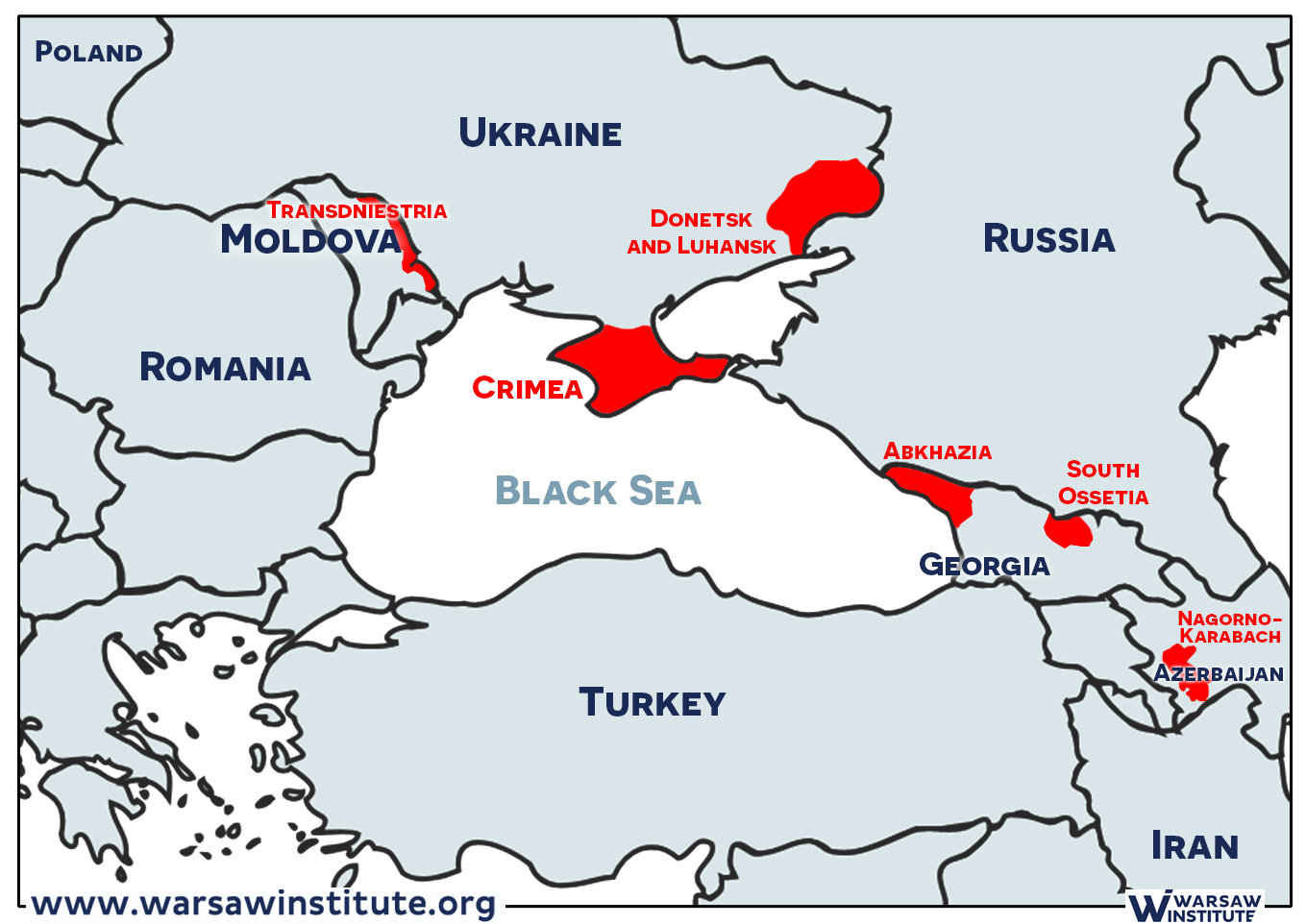 Map of conflicts in the post-Soviet area
Map of conflicts in the post-Soviet areaComparative analysis of selected conflicts
Although relatively pacific, the dissolution of the Soviet Union posed numerous challenges while delimiting borders of some of the newly-created republics. In the case of the Moldova-Transnistria conflict, the opposition of the latter region’s residents to the domination of Chisinau was tied to concern over the status of the Russian and Russian-speaking population in Moldavia. Back in 1989, forces of the Popular Front of Moldova political movement in Moldovan Soviet Socialist Republic (Romanian: Frontul Popular din Moldova) won a landslide victory, which led to the further escalation of the conflict. The movement called for declaring the Romanian as the official state language while its ultimate goal was to unify Moldova and Romania.
Mechanisms comparable to those observed in Moldova’s Transnistria later took place in the conflicts in South Ossetia and Abkhazia in the Georgian territory. Following the collapse of the Soviet Union, both republics faced a dilemma of whether to join the newly created Georgian state or to fight for independence. South Ossetia, Abkhazia and Transnistria declared their willingness to remain part of the Soviet Union, attempting to retain considerable autonomy they enjoyed as former Soviet republics.
The Nagorno-Karabakh conflict stands in stark contrast to the above ones because it concerns two neighboring countries. Ethnically, Nagorno-Karabakh is a territorial enclave in Azerbaijan inhabited by the Armenian population. The dispute involves Azerbaijan that is trying to retrieve full control over its territory and Armenia whose authorities uphold the separatist “quasi-state”, also known as the Nagorno-Karabakh Republic. Here, Moscow’s involvement comes as rather indirect as the Kremlin provides military support to Armenia, as evidenced by Russian military facilities at Gyumri and Erebuni. The fight over Nagorno-Karabakh is chiefly of geopolitical importance; on the one hand, it emerges as a local ethnic conflict while, on the other, its eventual settlement proves propitious for neighboring states. Azerbaijan receives both economic and military aid from Turkey, one of the major powers located close to the Caucasus whereas Armenia enjoys support both from Russia and Iran as the latter and Azerbaijan compete for influence over the region. Moreover, a populous Azeri minority inhabits the northern part of Iran. The governments in Baku and Tehran are involved in a diplomatic row over the region’s territorial belonging.
The war in eastern Ukraine has not yet evolved into a frozen conflict. Nonetheless, it may develop into what is now taking place in Transnistria, especially given that it is of little interest for Europe’s public opinion paying scant attention to its progression and efforts made to enfranchise the separatist authorities in Luhansk and Donetsk.
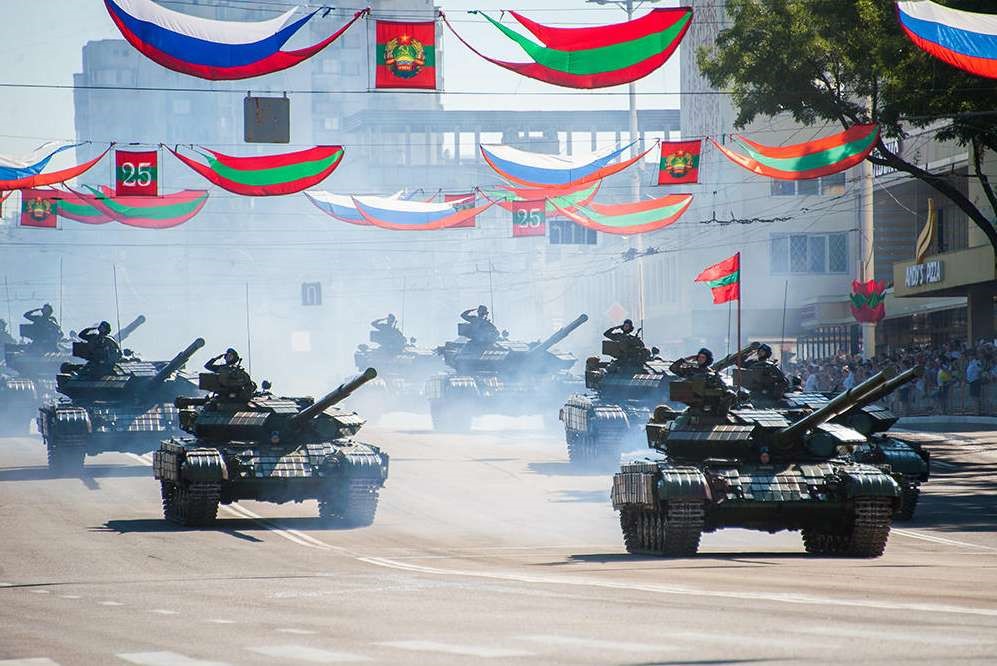 Source: Vectornews.eu
Source: Vectornews.euRussia’s actions as part of frozen conflicts
In some conflicts, Russia took step intending to develop a peace-making process provided that Moscow gained full control over both the separatist territory and the state to which it officially belonged.
After Vladimir Putin came to power in 2000, Russian foreign policy focused on retaining former Soviet republics within the Kremlin’s sphere of influence. All Russian pursuits towards former Soviet republics in Eastern Europe and the Caucasus were to prevent these states from making a rapprochement with Western political and military structures.
In the case of the Moldova-Transnistria conflict, Russian army backed the region’s residents with the aim of defending the Russian-speaking population in Moldova. From the Kremlin’s perspective, Romania’s annexation of Moldova would be the principal threat, excluding the latter from Moscow’s sphere of influence. For Russia, Transnistria is a tool for exerting political pressure on Moldovan officials incapable of seizing full power over their state territory, which blocks the country’s accession to the North Atlantic Treaty and the European Union. With both political and military control over the authorities in Tiraspol, Moscow is sustaining a peace dialogue, hoping to retain political jurisdiction over Transnistria and Moldova. Presented in 2003 by Russia, the so-called Kozak Memorandum constituted the most serious proposal for the conflict settlement over the past twenty years. Under the plan, Moldova would become a federal state, along with Transnistria and Gagauzia (the latter of which is an autonomous territory recognizing Chişinau’s domination) as two self-governing administrative units having a veto over major state decisions. Moreover, Chişinau would not be entitled to interfere in local legislation in these areas.
The recommendations listed out in the Kozak Memorandum proved unfavorable for Moldova’s central authorities, meaning that pro-Russian autonomous entities operating within the federation could block all decisions on the country’s Euro-Atlantic integration. Such a scenario would encourage Moscow to use its economic and political influence in Transnistria and Gagauzia to exert pressure on the government in Chişinau intending to incorporate Moldova into the Eurasian structures.
Despite the failure of the Kozak Memorandum and Moldova’s final decision to eventually withdraw from the plan, Moscow did not perform any tasks aimed at recognizing the sovereignty of Transnistria or annexing the territory from Moldova. This emerges as a logical explanation, all the more so that there is no direct land link between Transnistria and Russia. Also, after recognizing Transnistria’s independence, Russia could no longer yield control over Moldova while an essential part of the Kremlin’s strategy consists of maintaining the Transnistria-Moldova conflict at its present stage. The victory of Moldova’s pro-European coalition constituted a political challenge for Russia that threatened to recognize Transnistria’s statehood, attempting to force Moldova to abandon plans to integrate with the European Union.
Among other instances of Russian activities in the post-Soviet zone, there is also the Kremlin’s involvement in the Armenian-Azerbaijani Nagorno-Karabakh conflict. Moscow does not intend to directly engage in the dispute, hoping to retain its power in both countries while assuming the role of just one of several local powers with interests in the region. Moscow backs Armenia militarily yet it strives to exert more pressure on Yerevan. Back in 2012, the Kremlin forced Armenia to reject the Association Agreement with the European Union while prompting the country to join the Eurasian Union, or Moscow’s geopolitical project whose members are Belarus, Kazakhstan, Kyrgyzstan and Russia. If to take into account the Azerbaijani-Armenian conflict, the latter party enjoys a considerable advantage over the former, both militarily and economically, whereas assistance from such great partner as Russia is conducive to maintaining a relative balance of power in the neighborhood.
Moscow’s actions in Abkhazia and South Ossetia were of a different nature: first and foremost, both republics have land borders with the Russian Federation, hence their potential incorporation seems possible from a political and economic point of view.
Following the victory of Georgia’s Rose Revolution of 2003, the country reoriented its foreign policy in a more pro-Western direction, thus dropping the hitherto pro-Russian course. Georgia’s new ruling team sought to introduce pro-democracy reforms in the country in a bid to make it independent of Russia’s influence. Facing such changes, additionally fuelled by a risk of Georgia joining the North Atlantic Alliance, Russia took advantage of separatist moods in Abkhazia and South Ossetia to fulfill its geopolitical purposes. This was first manifested by Moscow’s decision to hand out Russian passports to Georgian-born residents of the two republics. Russia’s efforts were a pretext to commence a military operation aimed at protecting the country’s citizens in a dispute between the separatists and the Georgian army. Georgia’s conflict with Abkhazia and South Ossetia reached its apogee in August 2008, along with Mosco’s military offensive whose main goal was to preserve the sovereignty of Abkhazia and South Ossetia while recognizing both breakaway entities as fully independent. Russia’s operation came as a response to the earlier declaration of the North Atlantic Alliance at the Bucharest Summit in April 2008, thus when Georgia and Ukraine received an invitation to join the Alliance. Nonetheless, Russia’s military interference in Georgia in August 2008 ultimately put an end to the country’s further integration with NATO structures. Moscow conducted an armed intervention on the pretext of defending the autonomy of two separatist regions, in fact intending to block Georgia’s Atlantic ambitions.
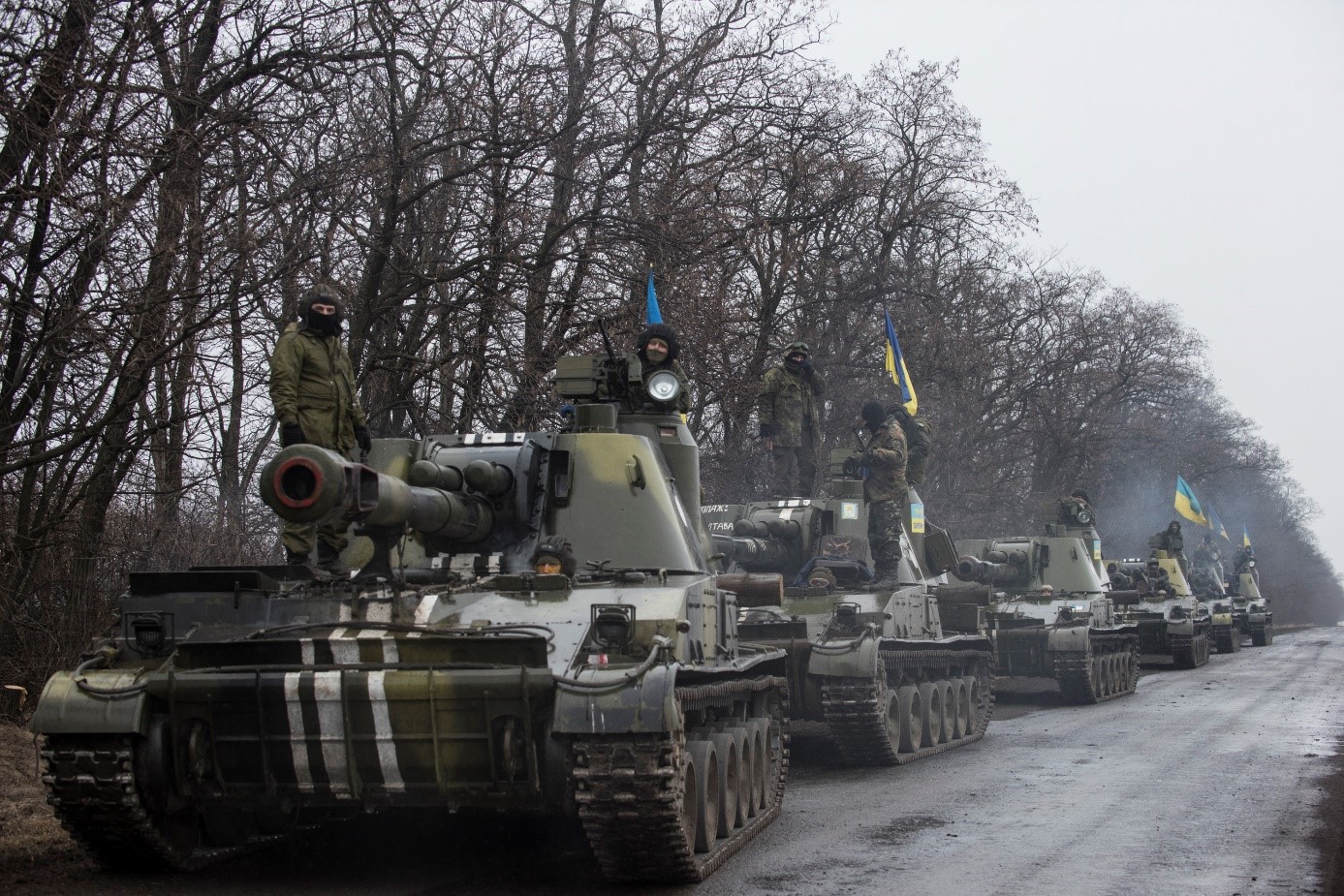 Source: Wikimedia Commons
Source: Wikimedia CommonsA perspective of frozen conflict in Ukraine
The conflict in Donbas broke out in response to actions performed in Kiev by Ukraine’s opposition against Viktor Yanukovych, who was president at that time. After he refused to sign the Association Agreement with the European Union, the country became a country gripped by a wave of anti-government demonstrations that later transformed into a revolution both in Kiev and other cities of western Ukraine. In consequence, Yanukovych was overthrown and forced to leave the country in February 2014. Meanwhile, in eastern Ukraine, pro-Russian separatist rebels overtly declared support for the toppled leader while putting forward an idea of an alliance with Russia. As a result, Moscow-backed Donetsk People’s Republic (DPR) and the Luhansk People’s Republic (LPR) were established yet Russia refrained from taking official actions, as was the case of the Moldova-Transnistria conflict. Despite the Minsk Protocol of September 2014, discussed later by the representatives of Ukraine, Russia, France and Germany, known as the Normandy format, the conflict failed to bring the expected results. Under provisions of the agreement, the parties to the conflict were obliged to halt their military operation and hand full control over the disputed area to the OSCE. Drafted in February 2015, the Minsk II Agreement constituted another attempt to lay the foundation for peaceful solutions to the conflict. The deal compelled Minsk and Kiev to discuss details, including issues related to withdrawing all heavy weapons from the region.
The conflict in Donbas seems to remain at the same stage as that in Transnistria. Although its military phase has not yet come to an end, the global public opinion ceased to treat the dispute as potentially related to the matter of mutual relations between Russia and the West. The Donetsk People’s Republic and the Luhansk People’s Republic, or the Russian-backed separatist “quasi-states”, maintain their domination over the territory they manage. It seems that Moscow’s goal consists of offering continuous support for both entities, making them equal partners for Kiev in a further discussion on the future of Ukraine. From Moscow’s point of view, incorporating these territories into Russia would appear little beneficial for the Kremlin, putting it at risk of losing authority over other parts of Ukraine, as exemplified by the Moldova-Transnistria case. Moscow finds it more profitable to back the independence of Ukraine’s self-proclaimed people’s republics, providing both of them with adequate tools enabling to initiate negotiations on a joint federation with the authorities in Kiev. Last but not least, the Kremlin will make efforts to ease relations with Western states and to lift sanctions imposed so far. Russia is therefore unlikely to incorporate both republics into its territory, which could be equivalent to admitting to being a topmost aggressor in the Ukrainian conflict.
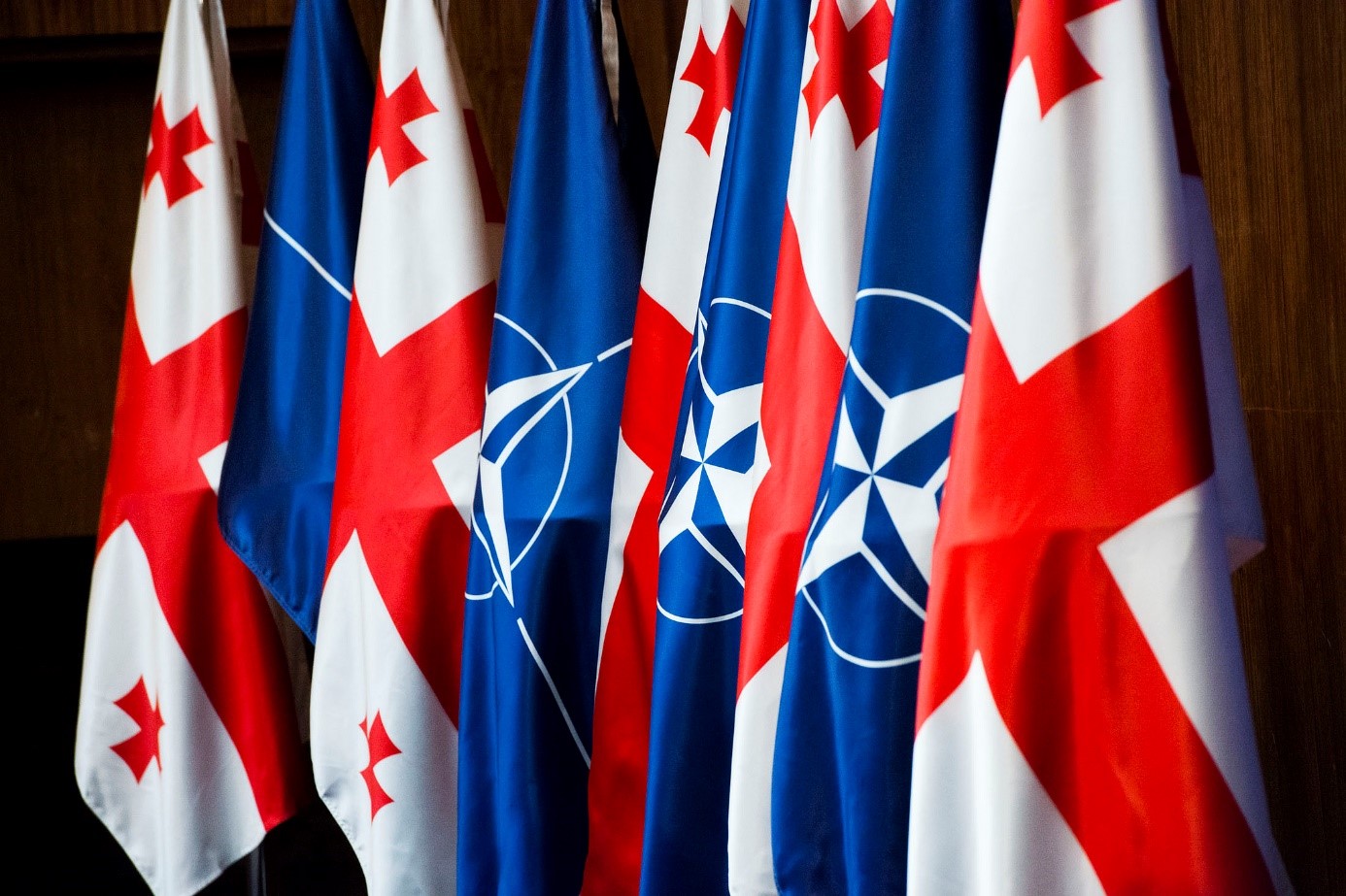 Source: NATO
Source: NATOFrozen conflicts and Euro-Atlantic integration
Georgia, Moldova and Ukraine reoriented their foreign policies towards closer ties with the European Union and the North Atlantic Alliance. Frozen conflicts in Georgia and Moldova and the still active one in eastern Ukraine come forth as a starting point for negotiations with the European Union as all unsolved disputes pose a threat to the security of the community’s immediate neighborhood. None of these countries will be admitted into the EU and NATO structures without prior resolution of their internal disputes.
This is due to concerns over engaging both organizations in direct conflict with the Russian Federation. It seems that many European countries pay more attention to maintaining correct relations with Russia rather than getting involved in peripheral disputes. From the European Union’s perspective, it is vital to ensure security in the immediate vicinity of the community. The governments in Kiev, Tbilisi and Chisinau will first and foremost strive to develop solutions that appear beneficial from the perspective of their European integration processes.
As a defensive alliance, NATO had no mandate to negotiate in conflicts that take place in non-member states. NATO’s main activities in this respect involved the suspension of military cooperation with Russia after the latter performed a disproportionate military action in Georgia in 2008. Nonetheless, this did not regard mutual cooperation in the field of counter-terrorism. A few years later, NATO’s response emerged after Russia annexed Crimea and launched military operations in eastern Ukraine in 2014, prompting the Alliance to suspend all forms of cooperation with Moscow.
Russia maintains frozen conflicts in the post-Soviet zone because such a solution impedes further development of Euro-Atlantic integration of the region. Their central authorities do not dispose of adequate financial means or military capabilities to enforce the reintegration of separatist-ruled “quasi-states”.
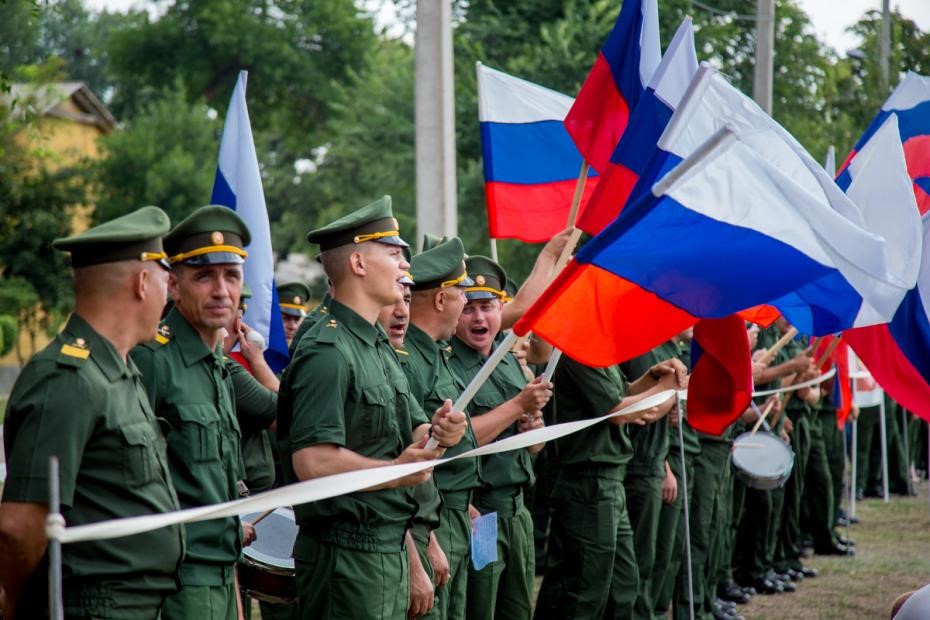 Source: Moldova.org
Source: Moldova.orgRussia’s strategic goals in selected conflict zones
Russia strongly opposed to the events in Georgia (2003), Moldova (2009) and Ukraine (both in 2004 and 2013/2014), all of which were linked to sweeping pro-European elites to power in the aftermath of so-called color revolutions. By maintaining the status of unresolved territorial disputes, Russia could have an impact on their further development thanks to supporting separatist authorities in Abkhazia, the Donetsk People’s Republic, the Luhansk People’s Republic, South Ossetia and Transnistria.
Russia takes advantage of frozen conflicts in the former Soviet republics to uphold its sphere of influence mainly because the Kremlin’s integration offer is scarcely interesting for the countries of the region. Following economic sanctions imposed by the European Union and the United States, fuelled by a drop in the energy resources prices (as estimated, Russia might have lost a total of $140 billion in 2015), Moscow has not been able to put forward a better economic aid offer to the neighboring countries than that proposed by the EU.
Still, Moscow sees Eastern Europe and the South Caucasus as its exclusive sphere of influence. Thanks to retaining control over their separatist entities, the Kremlin is able to keep restricted authority over the said states while pushing away the perspective of their integration within the European Union and NATO. For Russia, Euro-Atlantic integration of Eastern Europe and the South Caucasus is the greatest threat to its own security as the accession of the region’s countries into the European Union and NATO would push out Russia’s geopolitical influence from this part of Europe.
Moscow conducted an armed intervention on the pretext of defending the autonomy of two separatist regions, in fact intending to block Georgia’s Atlantic ambitions.
The publication of the Special Report was co-financed from the funds of the Civic Initiatives Fund Program 2018.
Selected activities of our institution are supported in cooperation with The National Freedom Institute – Centre for Civil Society Development.
All texts published by the Warsaw Institute Foundation may be disseminated on the condition that their origin is credited. Images may not be used without permission.



